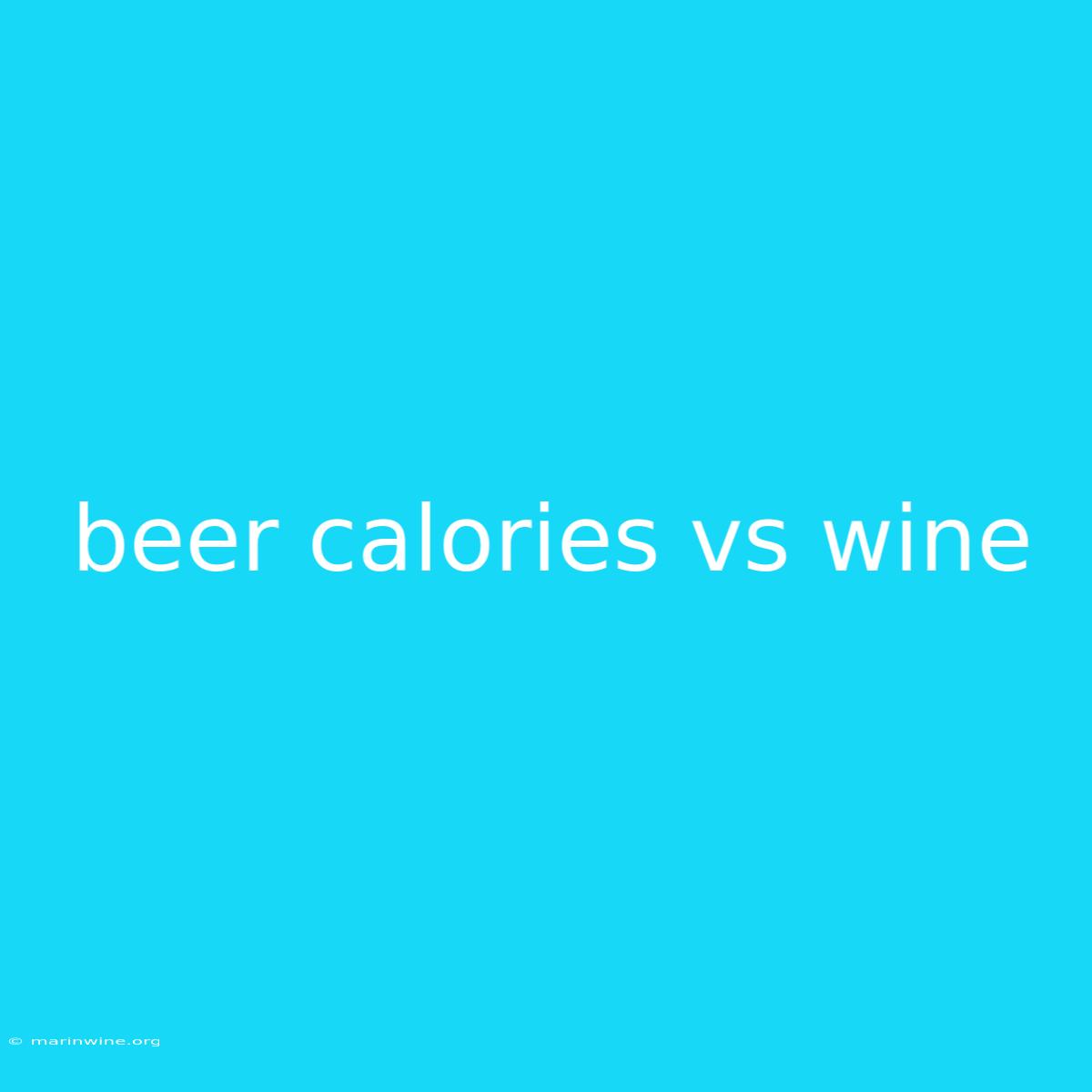Beer Calories vs. Wine: Which Drink Is Lighter?
Are you trying to be mindful of your calorie intake but still want to enjoy a glass of your favorite beverage? It's a common dilemma, especially when it comes to beer and wine. Both beer and wine can be sources of calories, but understanding their differences can help you make more informed choices.
Why It Matters:
Choosing between beer and wine for a calorie-conscious approach can be tricky, as both options can contribute to your daily intake. This article explores the calorie content of different types of beer and wine, allowing you to make an informed decision based on your preference and health goals. We'll also delve into factors that influence calorie content and offer insights into how to make healthier choices within each category.
Key Takeaways:
| Category | Calories per Serving (5 oz) | Key Factors |
|---|---|---|
| Light Beer | 95-110 | Typically lower in alcohol content, often brewed with rice or corn |
| Regular Beer | 150-200 | Higher alcohol content, often made with barley and hops |
| Craft Beer | 175-300 | Widely varying styles and ingredients, some can be high in calories |
| Dry Wine | 100-125 | Lower in sugar content, fermented to dryness |
| Sweet Wine | 150-200+ | Higher in sugar content, often with added sweeteners |
| Fortified Wine | 150-250 | Higher alcohol content, fortified with brandy |
Beer vs. Wine: A Closer Look
Beer
Beer is a fermented beverage typically made from malted barley, water, hops, and yeast. The style and ingredients used can significantly impact the calorie content:
- Light Beers: These beers are often lighter in color and flavor, and typically have a lower alcohol content. Light beers often use alternative grains like rice or corn to reduce the overall calorie count.
- Regular Beers: These beers are often darker in color and flavor, and typically have a higher alcohol content. Regular beers often use barley as the primary grain, leading to a higher calorie count.
- Craft Beers: Craft beers have a vast array of styles and ingredients, resulting in a wide range of calorie contents. Some craft beers can be quite high in calories, especially those with higher alcohol content or added sugars.
Wine
Wine is a fermented beverage made from grapes. The variety of grape, the winemaking process, and the amount of residual sugar can all influence the calorie content:
- Dry Wines: Dry wines are fermented to dryness, meaning that most of the natural sugars in the grapes are converted to alcohol. Dry wines are typically lower in calories.
- Sweet Wines: Sweet wines retain more of the natural sugar from the grapes, or sometimes have sugar added during the winemaking process. Sweet wines are often higher in calories.
- Fortified Wines: Fortified wines are wines that have been fortified with brandy or other spirits, increasing their alcohol content and calorie count.
Beyond Calories: Other Factors to Consider
While calorie count is an important factor, it's not the only thing to consider when choosing between beer and wine.
Here are some other aspects to think about:
- Alcohol Content: Alcohol itself contains calories, so higher-alcohol beverages will have more calories than lower-alcohol beverages.
- Sugar Content: Sugars in drinks can contribute to both calorie intake and blood sugar levels. Dry wines are typically lower in sugar than sweet wines.
- Nutritional Value: Both beer and wine can contain trace amounts of vitamins, minerals, and antioxidants. However, these benefits are minimal compared to the calories they provide.
FAQs: Beer vs. Wine
Q: Which is better for weight loss, beer or wine?
A: Both beer and wine can contribute to weight gain if consumed in excess. The best option for weight loss is to choose low-calorie beverages and limit overall intake.
Q: Is it possible to find low-calorie beers and wines?
A: Yes, there are low-calorie options available in both beer and wine. Light beers and dry wines are typically lower in calories.
Q: Does the color of the beer or wine affect the calorie count?
A: While lighter beers are generally lower in calories than darker beers, the color is not the only factor. Alcohol content and added ingredients can also influence the calorie count.
Q: Can I reduce the calorie content of beer or wine?
A: You can reduce the calorie content of both beer and wine by drinking smaller portions, mixing them with diet mixers, or opting for lower-calorie options.
Tips for Choosing Between Beer and Wine
- Read the Label: Always check the nutrition information on the label to see the calorie count and alcohol content.
- Choose Dry Wines: Dry wines are typically lower in sugar and calories.
- Opt for Light Beers: Light beers often have fewer calories than regular beers.
- Drink in Moderation: Limit your intake of both beer and wine to avoid excessive calorie consumption.
Summary
Choosing between beer and wine ultimately comes down to your personal preference and health goals. Understanding the calorie content of different types of beer and wine can help you make more informed decisions. By reading labels, choosing dry wines and light beers, and drinking in moderation, you can enjoy your favorite beverages without overdoing it on calories.
Closing Message: Whether you opt for the crisp refreshment of a light beer or the smooth complexity of a dry wine, understanding the calorie content of your drinks can be a valuable tool for making healthier choices without compromising your enjoyment.

